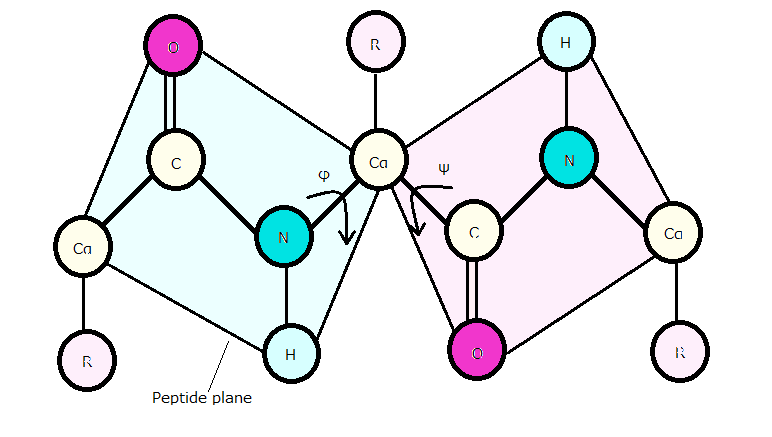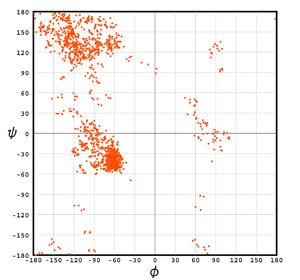
Dihedral angles of amino acid residues
A dihedral angle of a protein is the internal angle of polypeptide backbone at which two adjacent planes meet. The conformation of the backbone can be described by two dihedral angles per residue, because the backbone residing between two juxtaposing Cα atoms are all in a single plane. These angles are called φ (phi) which involves the backbone atoms C-N-Cα-C, and ψ (psi) which involves the backbone atoms N-Cα-C-N.
The dihedral angles of amino acid residues have restricted values due to steric hindrance between the carbonyl oxygen, the hydrogen of the NH group, the hydrogen on the Cα carbon and the side chain atoms.

A Ramachandran plot is a way to visualize dihedral angles φ against ψ of amino acid residues in protein structure. It shows the correlation of φ and &psi angles in a real polypeptide. The two main allowed regions in the Ramachandran plot around (-60, -50) and (-120, 120) correspond to the two main types of conformations (α helix and β sheet) in a protein. A small region around (60, 60) corresponds to left-handed α helix.
